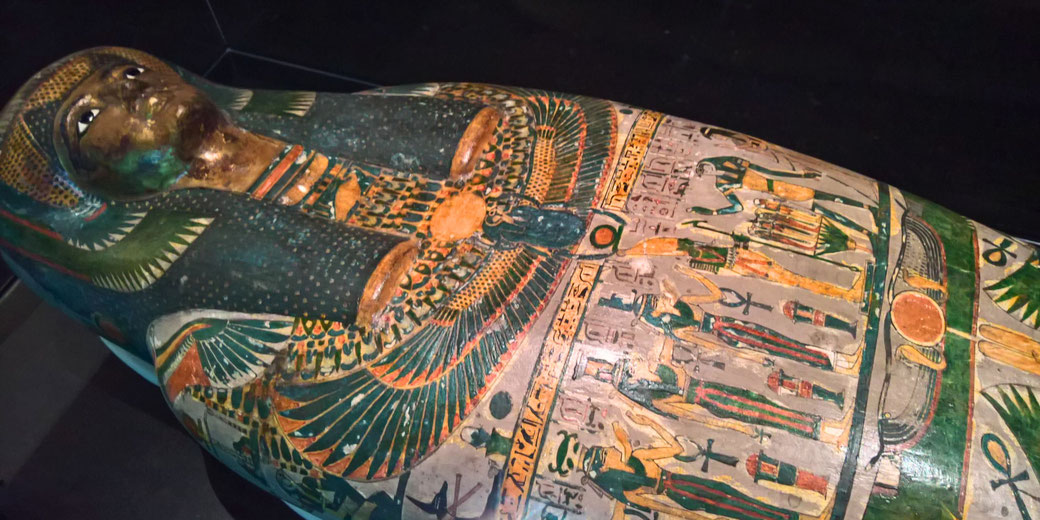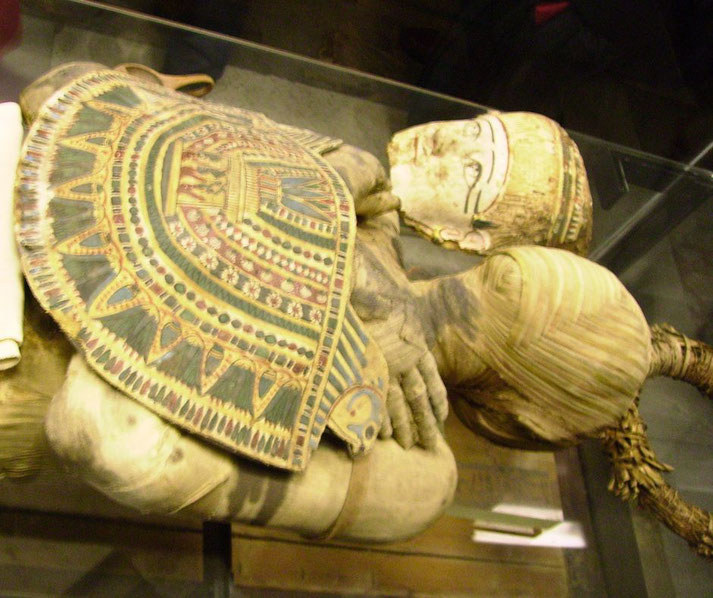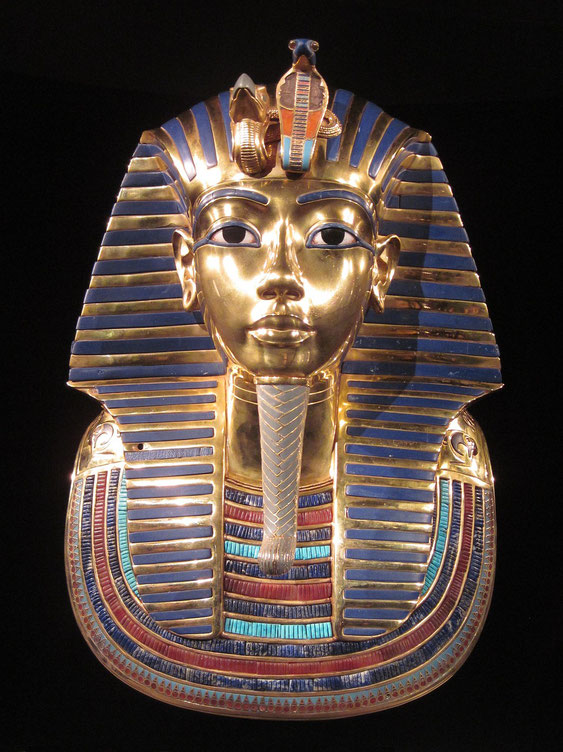How to mummify a pharaoh: A step-by-step guide

Ancient Egypt is best known for its elaborate burial practices, and one of the most famous of these is mummification.
The mummification of a person's body was a complicated process that involved its preservation so that it could be used in the afterlife.
The exact procedures involved in Ancient Egyptian mummification has fascinated people from many different cultures for centuries: from the elaborate burial practices to the mysteries surrounding the afterlife.
Even as modern people, we love the sheer ingenuity of the mummification process. But, how did they actually make their mummies? Let us show you...
Step 1: Prepare the body
The first step in the process of mummification was typically carried out in special workshops near the tombs or in the temples.
Once the body of the deceased was in their possession, the embalmers would begin by washing it with the water of the Nile River.
The reason for this was because this river was considered sacred by the Egyptians, so the washing process may have had a deeply religious element to it.
Also, in a more practical sense, the washing of the body with water was done to remove any dirt or impurities from the body.
Step 2: Removal of the organs
The next step in mummification was to remove the internal organs from the dead body.
The embalming priests knew that if this was not done, the remains would decay quickly and the mummification process would fail.
So, they developed a process where they could be removed via a small incision that was made in the left side of the abdomen.
Each of the organs were then placed in separate canopic jars, which were decorated with the heads of the four sons of Horus, who were believed to protect the organs.
Specifically, the lungs were placed in the jar with the head of the jackal-headed god, Duamutef, while the stomach was placed in the jar with the head of the human-headed god, Imsety.
The intestines were stored in one with the head of the baboon-headed god, Hapy, and the liver was in the jar with the head of the falcon-headed god, Qebehsenuef.

Step 3: Make sure you remove the brain
Once all of the major internal organs were removed, there remain one of the most difficult to deal with: the brain from the deceased's skull.
Unlike the modern understanding of the importance of the brain's role in a person's life, the Egyptians believed that the brain was of little importance in the afterlife.
As a result, they sought to discard it altogether. However, they needed to remove it without damaging the body.
To do this, the embalmers made a small incision at the base of the skull, near the back of the head, or enter through the nasal passage.
Once they had access, they then used a long, hook-like tool made of bronze or iron to break through the remaining bone and reach the brain.
The same tool was then used to break up the brain into smaller segments, and then pulled out through the nose.
This must have been a messy and time-consuming task. It is worth noting that the removal of the brain was not always successful, and sometimes parts of the brain were left behind in the mummies.
But, this was not considered a major issue, as the ancient Egyptians believed that the heart was the most important organ anyway.
It was the only one that was left in the body during mummification and, even if parts of other organs still remain, it was more important that the heart was intact.
Step 4: Add some extra stuff...
After the removal of the internal organs, the mostly hollow body cavity would then be filled with a variety of substances, such as linen, sawdust, or resin-soaked bandages.
This step helped to restore the natural shape of the body, which would have been distorted during the removal of the internal organs.
Also, the substances used for stuffing helped to dry out any remaining moisture in the body, which would help in preventing decay and preserving the mummy.
Step 5: Dehydration with natron
Once the removal of organs and the reshaping of the deceased was complete, it was now time to extract as much moisture from the body as possible.
Any moisture would lead to decay and the destruction of the body. The way that the Egyptians developed to do this was to dehydrate it using natron.
Natron was a naturally occurring salt that was found in abundance in Egypt. They would bring in baskets of it and pour it in a giant pile all over the body.
Once every inch of the deceased was covered in natron, it was left for a period of 40 days.
During this time, the salt absorbed all of the moisture from the body.
If done correctly, this process prevented any future decomposition and helped to preserve it for the afterlife.
Step 6: Embalming
Once the body was dehydrated, it was time for embalming. This involved the application of various oils, resins, and balms to the body.
The embalmers would massage the body with these substances and then wrap it in linen bandages.
They would also place amulets, such as the ankh, the symbol of life, and the ushabti, small figurines that were believed to serve the pharaoh in the afterlife, within the layers of bandages.

Step 7: Perform the 'Opening of the Mouth' ceremony
The final step in the mummification process was the Opening of the Mouth ceremony.
This ritual was performed to ensure that the pharaoh's spirit could use its senses in the afterlife.
During the ceremony, the embalmers would use a special tool to touch the mouth and eyes of the mummy, symbolically opening them.
The pharaoh's soul was believed to be able to use its senses once this was done.
Step 8: Final preparations
After the mummification process was complete, the pharaoh was ready for his journey into the afterlife.
The body was placed in a sarcophagus and buried in a tomb. The tomb was filled with all of the pharaoh's belongings, including food, clothing, and the Book of the Dead, a collection of spells and incantations that would guide the pharaoh's spirit through the afterlife.
The pharaoh's tomb was also adorned with decorations and statues of gods, including Anubis, the god of mummification, and Osiris, the god of the afterlife.

What was the point of mummification?
The ancient Egyptians believed in the afterlife and believed that the mummification process was necessary to ensure that the soul could travel to the afterlife and have a comfortable existence there.
Ultimately, they thought that the soul needed the body to recognize it in the afterlife, and so the body had to be preserved.
The process of mummification was expensive and time-consuming, and it was usually reserved for the wealthy and elite members of society.
Who carried out the mummification process?
The mummification process was a complex and time-consuming procedure that required specialized knowledge and skills.
The actual process of mummification was typically carried out by a group of skilled individuals known as embalmers.
The embalmers were highly respected members of society and had to undergo years of training to master the techniques of mummification.
They were usually priests who worked in the temples and were responsible for the care of the deceased.
They had to follow strict religious and ritual practices during the mummification process to ensure that the soul of the deceased would be able to journey through the afterlife successfully.
What do you need help with?
Download ready-to-use digital learning resources
Copyright © History Skills 2014-2024.
Contact via email
With the exception of links to external sites, some historical sources and extracts from specific publications, all content on this website is copyrighted by History Skills. This content may not be copied, republished or redistributed without written permission from the website creator. Please use the Contact page to obtain relevant permission.





